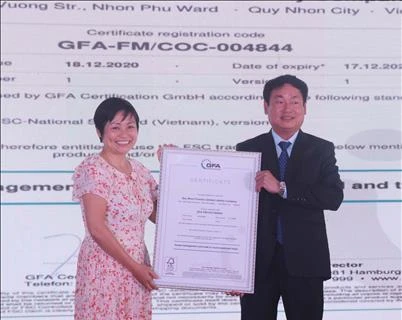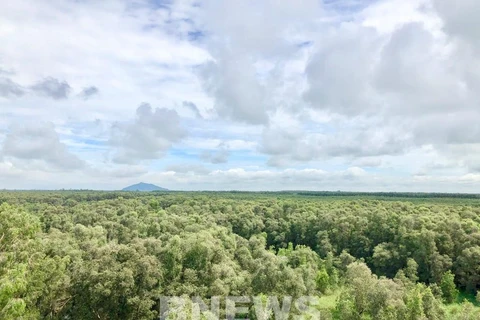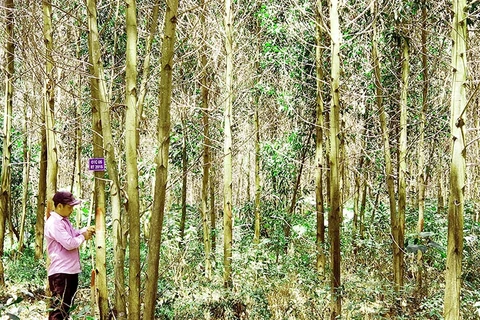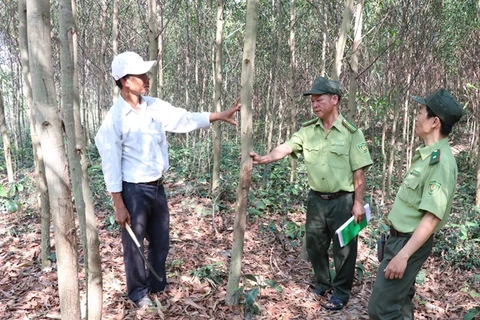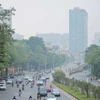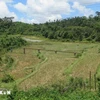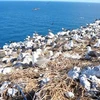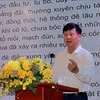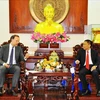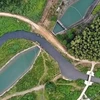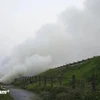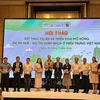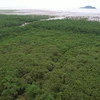 Pine trees planted in the Ta Dung National Park in the Central Highlands province of Dak Nong (Photo: VNA)
Pine trees planted in the Ta Dung National Park in the Central Highlands province of Dak Nong (Photo: VNA) The figures were released at an Earth Day event held in the Central Highlands province of Lam Dong’s Da Lat city on April 22 to mark the completion of the United States Agency for International Development (USAID)’s Vietnam Forests and Deltas project.
The 31.4 million USD climate change programme was implemented by Winrock International from 2012-2021 to support Vietnam’s transition to climate resilient, low-emission sustainable development.
Over its more than eight years of implementation at the national level and in the provinces of Quang Ninh, Nam Dinh, Son La, Thanh Hoa, Nghe An, Lam Dong and Long An, the project supported the Ministry of Agriculture and Rural Development to successfully implement the PFES system at the national scale. The PFES has contributed to increasing incomes and living standards for hundreds of thousands of people living in the mountainous areas who receive payments to help protect forests.
In addition, the project trained approximately 350,000 people on climate change adaptation, forest management and livelihoods development and helped over 200,000 people implement climate change risk reduction practices in the Mekong and Red River Deltas.
At the event, USAID Acting Mission Director Bradley Bessire said the Vietnam Forests and Deltas project is the first climate change collaboration programme between USAID and the Vietnamese Government, aiming to strengthen forest management and build resilience for vulnerable communities in the Red River and Mekong Deltas.
On the occasion, USAID also announced two new projects – the Sustainable Forest Management project (2020-2025), which seeks to avoid carbon emissions from natural forest conversion and increase carbon sequestration through the improved plantation management; and the Biodiversity Conservation project (2020-2025) that aims to maintain and increase forest quality, and protect and stabilise wildlife populations in national parks and natural reserves. These projects will work in 12 provinces across Vietnam./.
VNA

